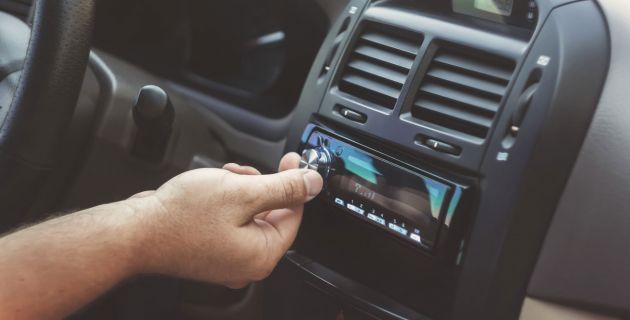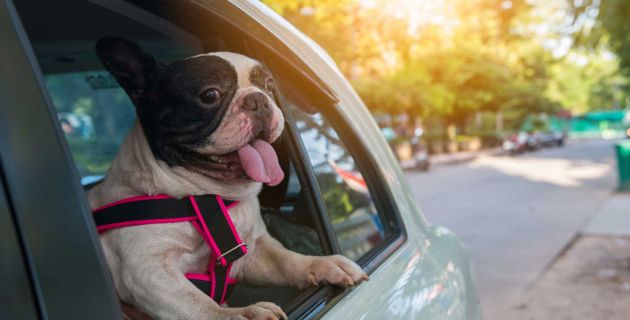A decades’ worth of teenage distracted driving statistics show that young drivers are far more susceptible to distraction than adult drivers. In fact, drivers aged 16-19 years old are nearly 3 times more likely to be involved in an accident than those aged 20 and older.
There are 3 main categories of distractions, each of which can impair a driver’s ability to stay focused on the road. There is:
- Cognitive, which are distractions that take your mind off of driving.
- Visual, which are distractions that take your eyes off the road.
- Manual, which are distractions that take your hands off the wheel.
Listed below are some of the most common cognitive, visual, and manual distractions that teens—and you—may encounter while driving. Keep an eye out for them!
1—Texting While Driving
Texting tops this list for the fact that texting while driving increases the risk of crashing by 2 to 9 times—and the texting and driving statistics are glaring. Teens are involved in 900,000 accidents every year in the U.S., with thousands of those attributed to texting alone. On average, responding to a text message will take a driver’s eyes off of the road for about 5 seconds, while the average reaction time required to avoid a sudden road hazard is less than 1 second. In short, texting and driving is an equation for danger.
2—Making a Phone Call
Phone calls account for fewer accidents than text messaging because they do not require drivers to avert their eyes from the road. However, they do present significant danger as a cognitive distraction. The mind can only attend to so many tasks at once, so by diverting cognitive resources to a phone conversation, drivers decrease the amount of attention paid to driving. This results in slower reaction times and poorer decision making.
3—Changing the Radio

Attending to the music in the car seems to be particularly important to younger drivers, but doing so can be extremely hazardous. Whether reaching for a stereo preset, digging out an old mix CD, or syncing the car’s Bluetooth with a mobile device, fiddling with music in the car requires the driver to take a hand off the wheel and their eyes off the road.
4—Reaching for an Object
Just like messing with the radio, reaching for an object beyond the immediate grasp requires a driver to remove a hand from the wheel and avert their eyes from the road ahead. Not only does this reduce a driver’s ability to react to road hazards, but it can actually cause them to create one by accidentally veering the wheel.
5—Eating or Drinking
Eating and drinking also requires drivers to take their hands off the wheel and divert attention away from the road ahead. Dropping food and spilling drinks may also cause drivers to react involuntarily by swerving or braking suddenly, creating hazards to themselves and other motorists nearby.
6—Putting on Makeup
Applying makeup is a huge visual and cognitive distraction because it requires precise motor skills and extended visual attention, both of which are also required to drive safely. Also, the need to apply makeup during a drive could be a signal that the driver is running late, and rushing anywhere in the car is a hazard in and of itself.
7—Rowdy Passengers
Some of our best memories are made driving with friends while jamming to our favorite tunes. However, studies show the addition of even a single passenger makes teens almost 8 times as likely to be involved in an accident. In all, 15% of accidents involving teen drivers are caused by teens interacting with passengers, who may be rowdy and thereby provide more of a distraction.
8—Distracted by Your Pet

Unlike human passengers, pets lack the judgment and understanding necessary to avoid distracting young drivers from the task at hand. The excitement of a car ride may cause pets to act erratically, or simply demand attention from the driver. Sudden turns or changes in speed can also cause pets to lose their balance. This may elicit concern from the driver or cause them to lose control should the pet bump an arm or fall in their lap. Additionally, if the pet is not properly secured in the vehicle, sudden changes in the vehicle’s motion could prove dangerous or even fatal to our furry friends.
9—Looking at Something Outside
Studies have shown that about 1 in 10 accidents are caused by inattention due to distractions out the window (e.g ogling at scenery). Compounding this, a recent study conducted by AT&T and Braun Research found that 70% of drivers who own a smartphone engage in some type of cell phone use while driving, and of this cohort, 10% reported snapchatting, taking pictures, or shooting video while driving. Combining these tendencies with distractions outside the car makes diverting one’s attention away from the road a likely and dangerous occurrence.
10—Inclement Weather
Navigating under inclement weather conditions is a task that requires experience to handle effectively. Teen motorists may drive too quickly or aggressively during poor weather conditions or become distracted by rain or snow blasting against their windshield.
How to Prevent Distracted Driving?
The first step to preventing distracted driving is simply acknowledging the existence of the various distractions teens will encounter on the roadway. Then, by speaking to your teen about the dangers and statistics behind driving distractions, you can begin to make an impact and develop strategies to avoid them.